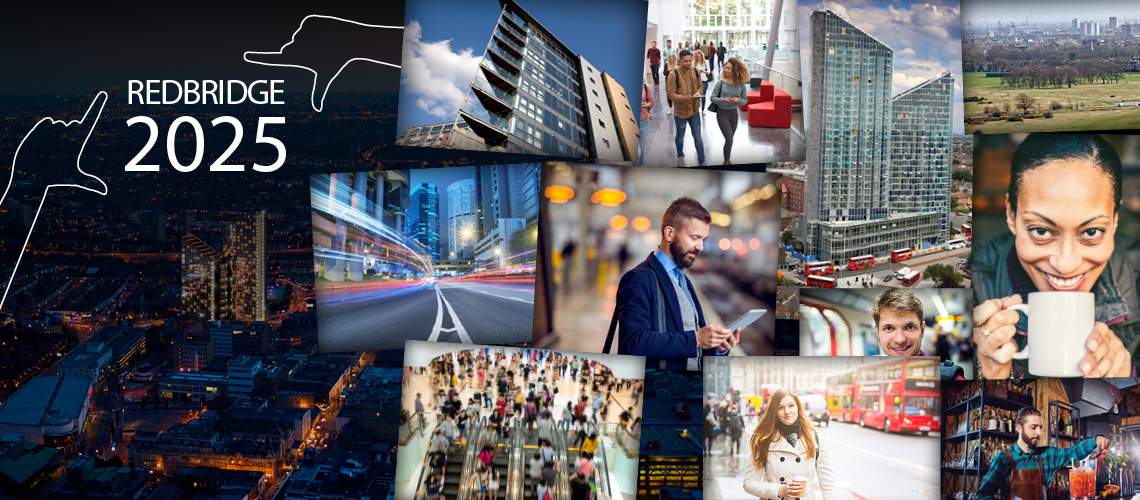
 Scenario 1: Glittering Prizes
Scenario 1: Glittering Prizes
It’s 2025 and Ilford is booming. The economy initially wobbled after Brexit but the Council found ways to attract significant new investment into the Borough. The High Road is a line of glittering towers running from the Elizabeth Line station down to what used to be Lynton House. Gone are the pound shops and market stalls of 10 years ago have relocated to other parts of the Borough. Today, Ilford is up-and-coming, drawing in the young and well-off who love the town’s mix of convenience and easy access to the bright lights of London, and new bars and restaurants are opening all the time. For many people the new Ilford finally arrived on the day in 2021 when a new branch of Whole Foods opened alongside Lidl. Among the new customers are the first cohort of students to arrive at Imperial College’s new east London campus, a key anchor institution in a new civic quarter.
This boom has changed the way Redbridge sees itself. No longer a suburb on the fringes of London, the Council promotes the area as an affordable and liveable alternative to increasingly overheated inner boroughs. The town centre has attracted the very beginnings of a cultural and tech scene, with small companies given cheap rent to bump start the Borough’s economy. Valentines Park is thronged on summer weekends with people having barbeques, while estate agents have started hyping Barkingside and Gants Hill as the next big thing in local property.
All the new development has helped to relieve pressure on public services. Younger people make fewer demands, after all, and they pay the same Council Tax as everyone else. The fact that they can afford the rising house prices in Ilford means that they are, by definition, pretty well off and can look after themselves. The main demands they make are for good schools and a clean environment.
Higher house prices are rippling out across Redbridge, pushing up costs across South Ilford and reaching deep into Valentines and South Woodford, with some older people tempted to sell-up and downsize to smaller properties in the greener parts of Essex.
People who bought their houses in the 90s and noughties are delighted by their constantly rising house prices. But others are starting to ask whether their children will be able to afford a life in Redbridge, and local campaign groups worry that economic growth is leaving the vulnerable behind.
The Borough’s huge private rented sector used to cater to a wide range of different incomes, but these days it is increasingly unaffordable for the poorest. While the Council has built more affordable housing this hasn’t been enough to keep up with demand and it has had little choice but to start moving more and more people into temporary accommodation outside London.
The Borough’s communities remain both diverse and cohesive, but there are signs that tension is building as the Borough tries to accommodate huge demographic change. With some of the independent shops of Ilford Lane struggling to survive the demand for new housing, and competition from the High Road, some people feel like Ilford in particular is losing its soul.
Redbridge is a great place to be up-and-coming, but some parts of the population are coming under financial and social pressure.
